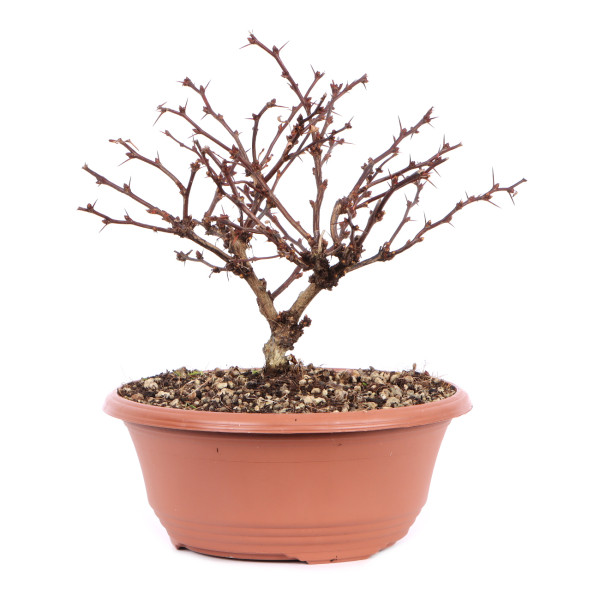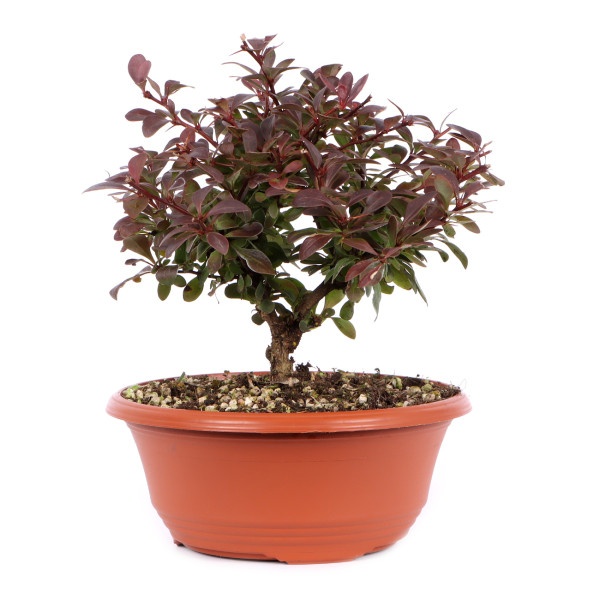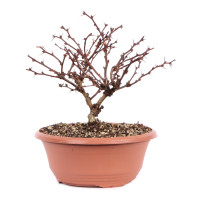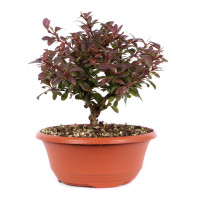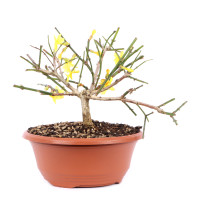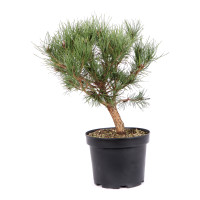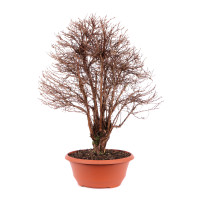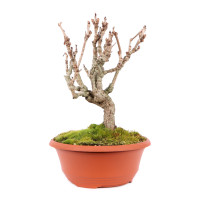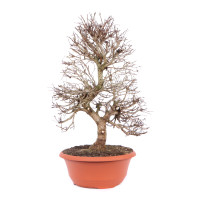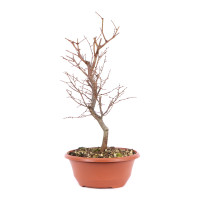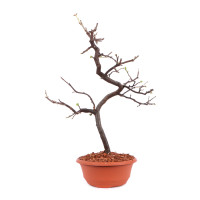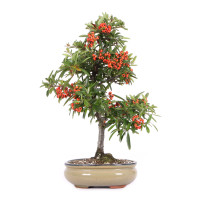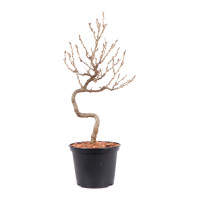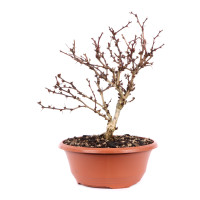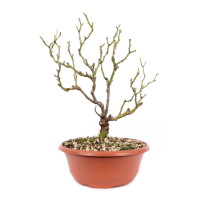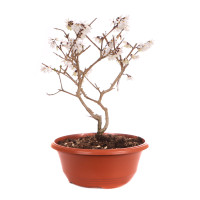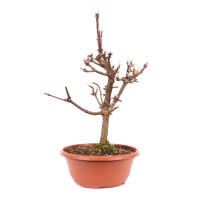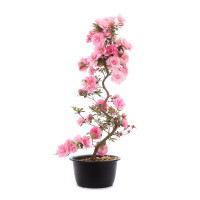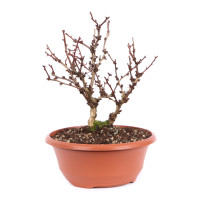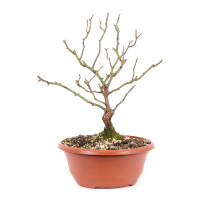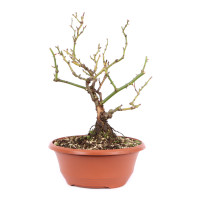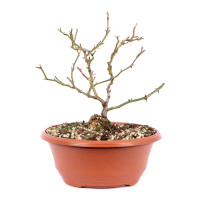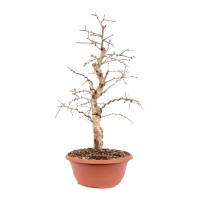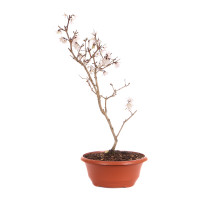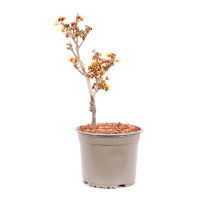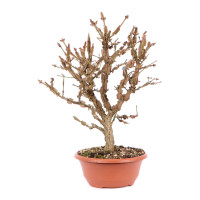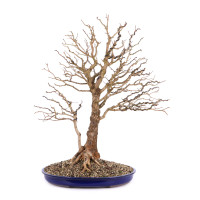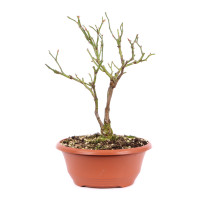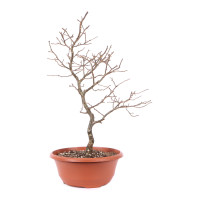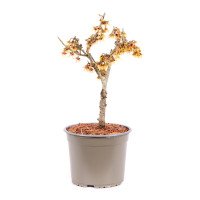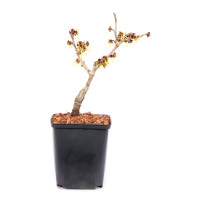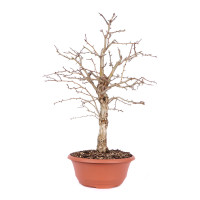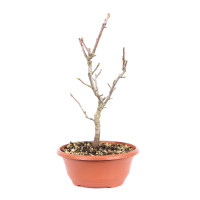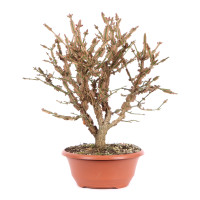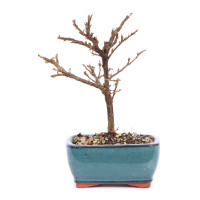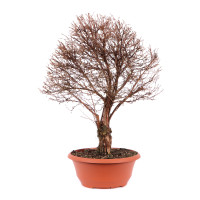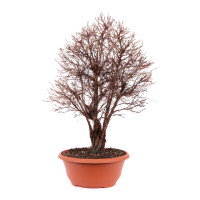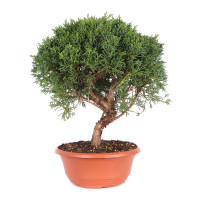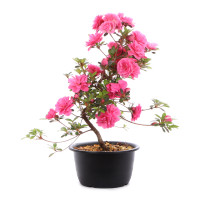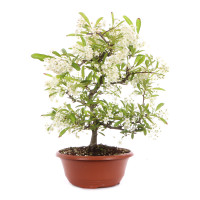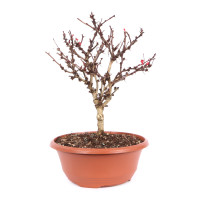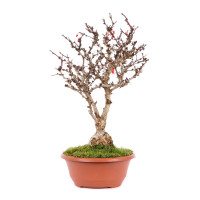Berberis thunbergii 'Atropurpurea Nana'
Japanese Barberry 'Atropurpurea Nana‘
- Order number: 1091-P-24-0293
- Height: 20 cm (incl. pot)
- Foliage: deciduous
- Bonsai Pot: plastic pot
- Year: 2018
- Characteristics: with flowers, with fruits
- Origin: Germany
Berberis thunbergii ‘Atropurpurea Nana‘ - Japanese Barberry 'Atropurpurea Nana‘
General:
The japanese barberry is a medium-tall, multi-shoot shrub that occurs naturally in China and Japan. It was brought to Europe by the botanist Carl Peter Thunberg in the 18th century. The japanese barberry is a maximum of 3 meters high and usually just as wide. The leaves are fresh green, small and have a splendid autumn color. The flowers are yellow and reddish in clusters and coral-red, elliptical fruits are formed that still hang on the plant in winter. The japanese barberry is very robust, tolerates pruning and is frost hardy.
Care as a bonsai:
As a bonsai, the barberry is particularly suitable because of its dense branching, the small leaves, the flowers, the fruits and the autumn color. The topiary and repotting is done in the spring before the leaves emerge. The maintenance pruning (shortening the fresh shoots) is repeated continuously during the growth period depending on the growth. Wiring the plant is not easy due to the thorns, but it makes sense. The barberry has many fine roots and should be repotted regularly to avoid soil compaction.
Special features of the variety japanese barberry 'Atropurpurea Nana‘:
Many varieties and hybrids have been bred from the japanese barberry. This is also the case with the ‘Atropurpurea Nana‘ variety. This small, red-leaved plant impresses with its year-round, dark red colored leaves. In autumn the leaves turn bright scarlet. The sunnier the location in summer, the more intense the red color of the leaves. Shady locations lead to a green-red discoloration of the foliage. This small-growing variety also blooms with small yellow flowers. These sit on special short shoots on biennial wood. The bark becomes very barked with age and gives the tree a special expression of maturity.

